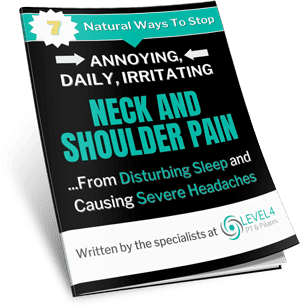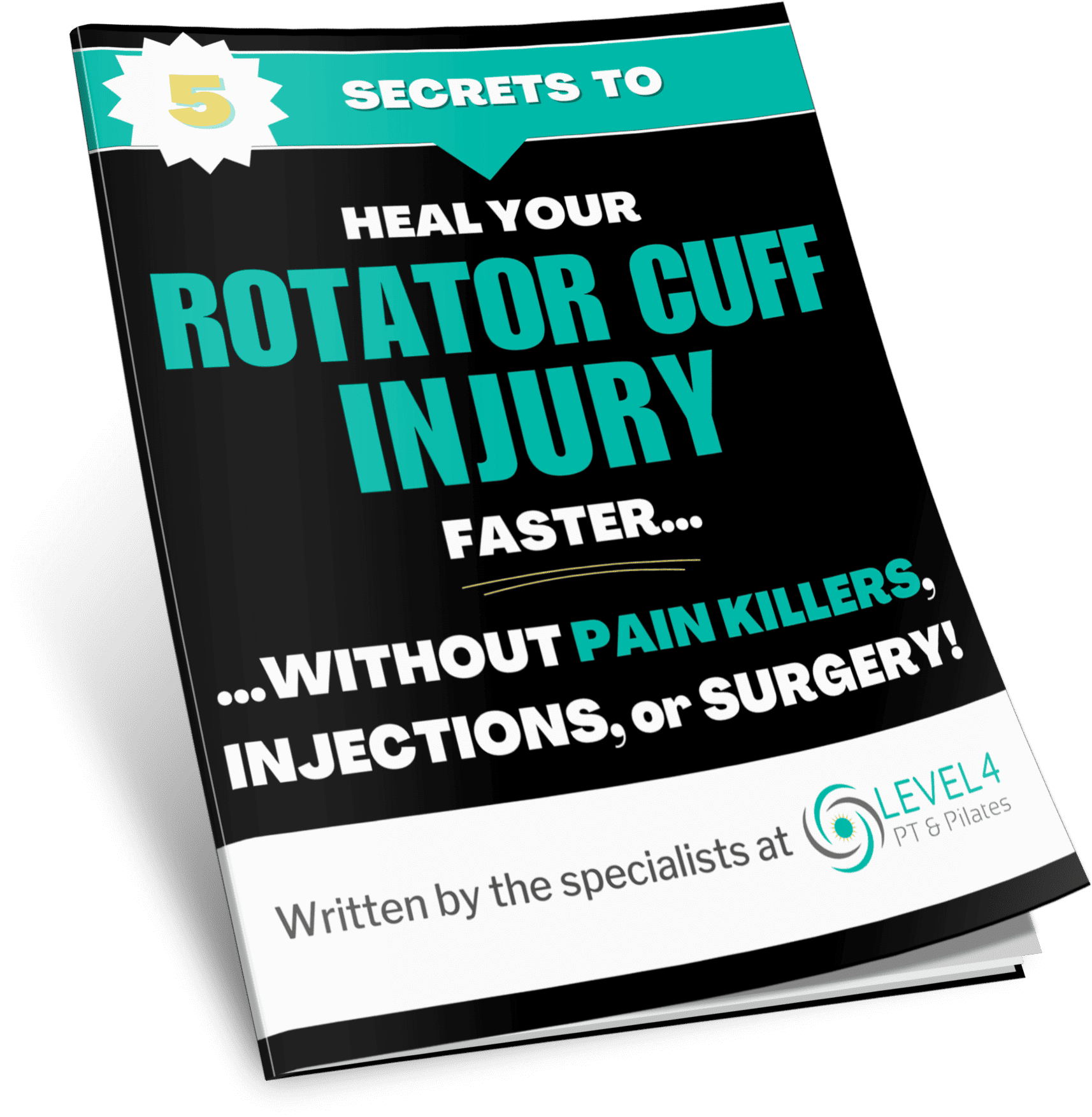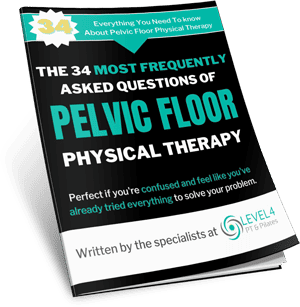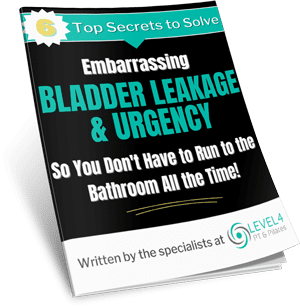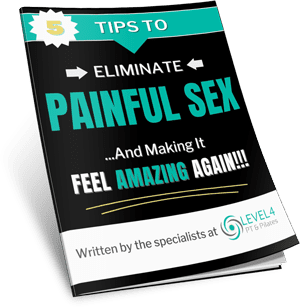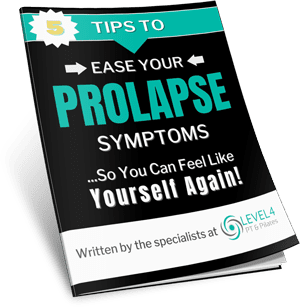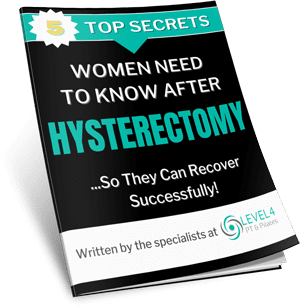In June 2017, I wrote this post about the 3 Secrets to Keep Back Pain Away From Your Golf Game.
Over the last year, we have helped hundreds of golfers get back to playing the game they love so dearly.
Additionally, through our conversations and evaluations, we have determined 2 new areas that we really see correlate with why golfers are experiencing back pain with playing golf.
So, if you are someone who plays golf and is experiencing or has experienced back pain in the past, you need to continue reading.

With roughly 26 million golfers in the United States and about 6.5 million of those being over the age of 65 years, golfers with back pain are becoming more and more prevalent.
As we age, natural spinal mobility decreases, which makes us even more susceptible to injuries of the spine.
Additionally, the low back only rotates about 10-12 degrees.
This means that the rest of your rotation must happen up high in your mid-back, or down lower into your hips.
It is estimated that nearly 35% of all golf injuries occurring happen in the low back, making it the number one location for golf injuries.
And about 28% of people continue playing, despite having back pain.
In addition, the direct annual costs for low back pain are around $91 billion each year.
Read ahead as we discuss 3 secrets (and 2 new ones) to keeping the pain away from your golf game.
1. Dynamic Stretches
Warming up properly is so important, especially as you age.
We say it often, but so few actually do it.
With a growing number of baby boomers wanting to continue playing golf into their elder years, it’s important to implement a preparatory routine before starting your round.
I know what you might be thinking…
If I have a 6:30 am tee time, how early do I need to arrive at the course to get this stuff done?
The routine doesn’t have to belong and we recommend less than 10 minutes.
We also recommend doing a routine that is dynamic in nature.
One that takes you through large movement patterns, starting off slowly and progressing up in speed.
The reality is you will probably spend more time putting your shoes on, getting your bag situated on your cart and hanging out in the clubhouse than you will actually be doing a good warm-up.
Check out the video below on what a good dynamic warm-up entails.
I have put together what I call the essentials of golf dynamic warm-up. Click HERE to see the video.
2. Swing the Club… And Swing Often
Have you ever thought about how many swings you take during one golf round?
If you are good, you only need between 70-80 swings and one-third of those are probably putts (not a big swing).
That is still a lot of swings and does not account for your warm-ups or prep swings.
If you aren’t as good, you might need 90-100 swings (is that you?) in your round.
First, swing the club after you have warmed up your body.
Doing this when you are “cold” only increases your risk of being hurt…
Especially if you are over 40 years of age.
So, go back to #1 and review!
Be sure that after you have warmed up, that you start swinging slowly and build up your intensity and speed.
If you play every week, you should be hitting balls at the range at least one time a week.
If you play less frequently, you should go hit the range 1-2 weeks prior to your expected round.
Here is a video we did onsite at Del Mar Golf Center talking about proper warm-up before you swing.
Click HERE to watch and don’t forget to share it.
3. Get Your Hips Going
This one is often overlooked and found to be a big cause for some back injuries in golf.
If your hips are tight, then this adds unnecessary stress to your back because golf requires a lot of rotation.
Hips are also made to rotate along with your spine, so tightness will only add more strain.
Hip strength can also play an important role in your golf game.
On your downswing, the hips initiate the movement and weakness in your hips starts a slow golf swing…
Not really what anyone wants to do.
But it isn’t just about speed, but also about control.
If you open your hips too early, the clubface opens up and the impact on the ball causes a slice… that’s no good for anyone’s game.
The same can be said about the follow-through.
The hips need to be strong enough to engage during the follow-through, which protects your lower back.
4. New – Prepare Your Body Before You Swing
I originally thought this would be common sense to everyone, but over the past years, my conversations with individuals with back pain would lead to some strong commonalities.
Roughly 90% of them would utilize tip #3 and swing often.
They would go to the driving range and hit balls.
I remember back in college, my soccer coach would tell us “Practice doesn’t make perfect… But perfect practice will make you closer to perfect!”
I think that applies here tremendously!
If you just go out and practice, you should make sure your body is prepared to accept what you are about to throw at it.
And so this point really sums up #1, #2, and #3.
If you really want longevity int he sport, you need to keep your body moving as well as possible, so you can keep back pain away from your golf game.
5. Seek Professional Help
This one is two-fold.
As a golf performance physical therapist, I want my clients to get back playing as quickly and as safely as possible.
I have several golf professionals and coaches that I work with locally to bring value to our clients, with a team approach.
The coach can sometimes work around your limitations, but collectively it can really limit your ability to perform at your best.
So, what we started going is to screen the new golfers that the local golf professional has a new client and we report to them on what the limitations may be.
This gives the golf professional an understanding of what is going on.
We then give the clients a plan to address their specific limitations, and the golfer wins.
They feel better, they move better, and they play better!
Here is a recent video we did with local golf professional Steve Vaughan from the Crossings at Carlsbad.
Steve is an awesome instructor with a keen eye for quick change.
His approach is simple… See it and fix it!
In this video, we talked about why most golfers hit the ball to the right.
Summary
In summary, golf is a great game that requires self-preparation. Going into it without preparation significantly increases your risk of being injured… Especially in your lower back!
- To keep your back healthy, implement a dynamic warm-up that is 5-10 minutes in length before you start playing.
- Get out there and hit the ball, but only after you are warmed up to do so.
- Get a professional to accurately assess what is going on.
- Working with a golf performance physical therapist and a golf pro will give you the fastest and most accurate changes specific to you.
- Increasing your hip mobility and strength will add stability to your spine by allowing the areas to work in harmony.
This will make you a better player and ultimately allow you to have more fun with the game.
If you want to see how a golf performance physical therapist can help you with golf, start with some information. Go to our golf page and download our free tips guide.
If you want to come and talk to us to learn about what else you can do to be a more efficient golfer, request a phone consult with one of our golf performance physical therapists.
See you at the 19th hole!
Dr. Oscar Andalon, DPT, STC, MTC, CSCS, SFMA
This post was originally published on June 6, 2017. We have added new content to strengthen the information, along with adding new videos and external links. Please share this information on social media, leave a comment about it, and spread the word. We would greatly appreciate it.
- Can Physical Therapy Help My Muscles After Having Covid? - January 26, 2022
- The Real Story Behind What’s Causing Your Sciatica - August 30, 2021
- Should I Have Surgery to Repair a Tear in My Rotator Cuff? - February 9, 2021





